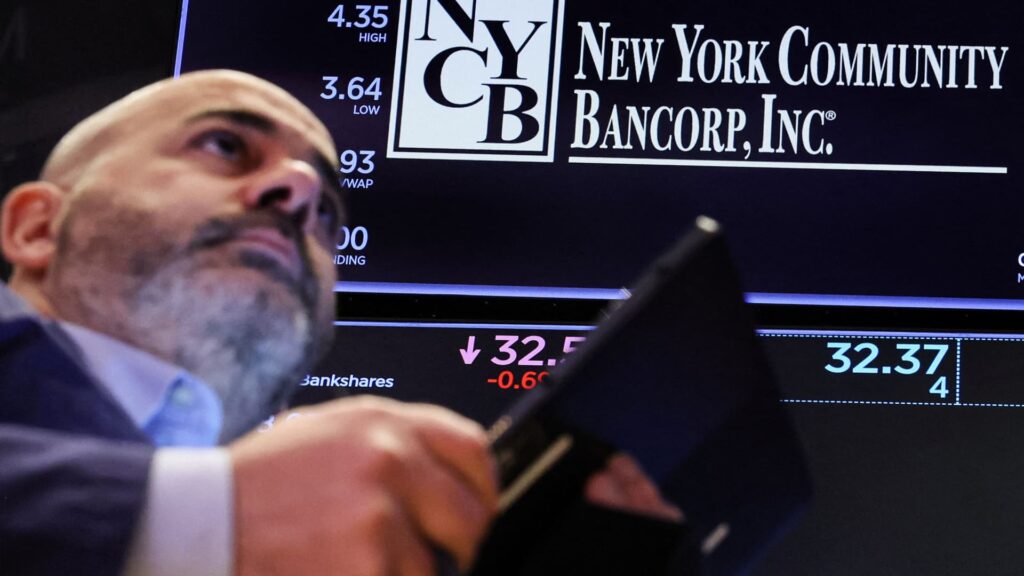The forces that consumed three regional lenders in March 2023 have left hundreds of smaller banks wounded, as merger activity — a key potential lifeline — has slowed to a trickle.
As the memory of last year’s regional banking crisis begins to fade, it’s easy to believe the industry is in the clear. But the high interest rates that caused the collapse of Silicon Valley Bank and its peers in 2023 are still at play.
After hiking rates 11 times through July, the Federal Reserve has yet to start cutting its benchmark. As a result, hundreds of billions of dollars of unrealized losses on low-interest bonds and loans remain buried on banks’ balance sheets. That, combined with potential losses on commercial real estate, leaves swaths of the industry vulnerable.
Of about 4,000 U.S. banks analyzed by consulting firm Klaros Group, 282 institutions have both high levels of commercial real estate exposure and large unrealized losses from the rate surge — a potentially toxic combo that may force these lenders to raise fresh capital or engage in mergers.
The study, based on regulatory filings known as call reports, screened for two factors: Banks where commercial real estate loans made up over 300% of capital, and firms where unrealized losses on bonds and loans pushed capital levels below 4%.
Klaros declined to name the institutions in its analysis out of fear of inciting deposit runs.
But there’s only one company with more than $100 billion in assets found in this analysis, and, given the factors of the study, it’s not hard to determine: New York Community Bank, the real estate lender that avoided disaster earlier this month with a $1.1 billion capital injection from private equity investors led by ex-Treasury Secretary Steven Mnuchin.
Most of the banks deemed to be potentially challenged are community lenders with less than $10 billion in assets. Just 16 companies are in the next size bracket that includes regional banks — between $10 billion and $100 billion in assets…
Read the full article here





